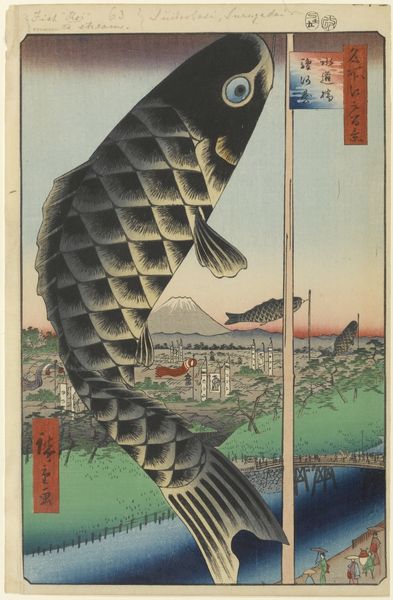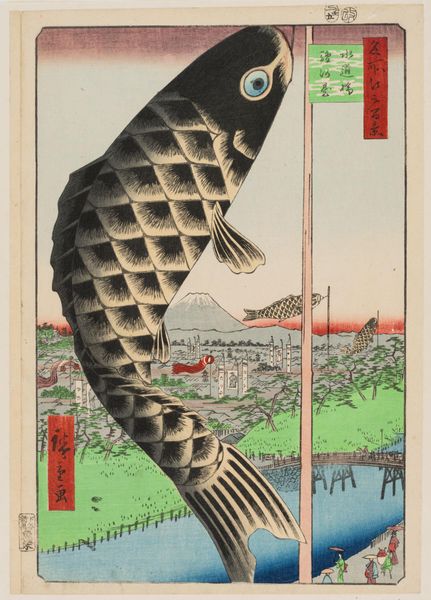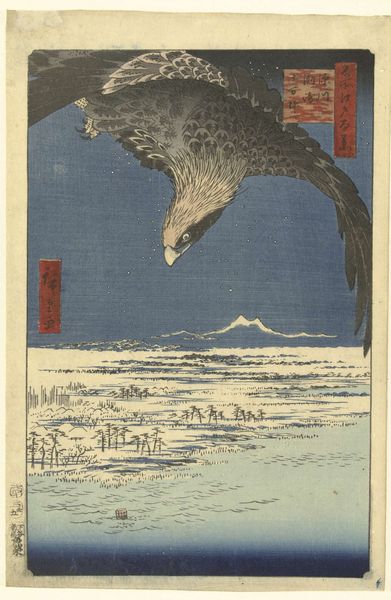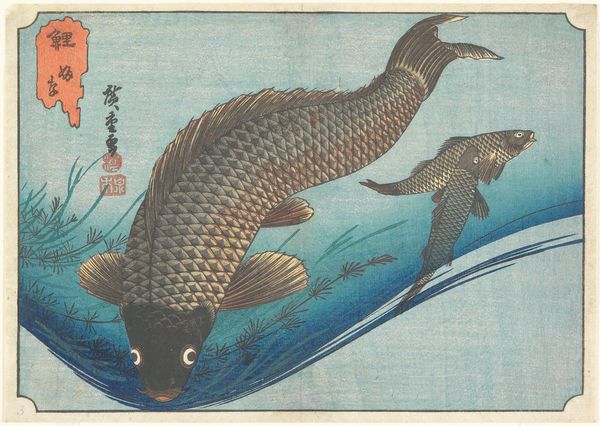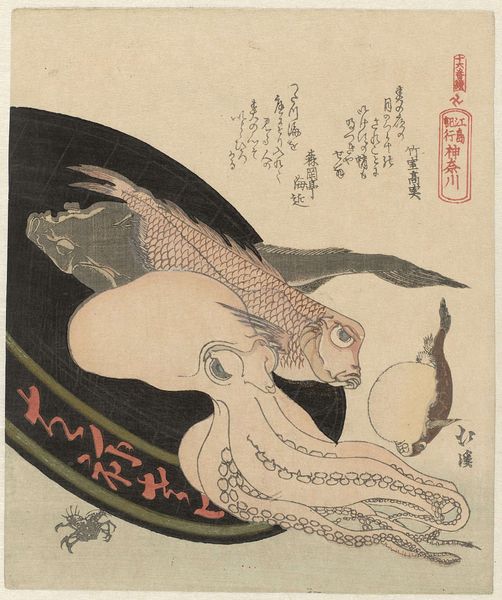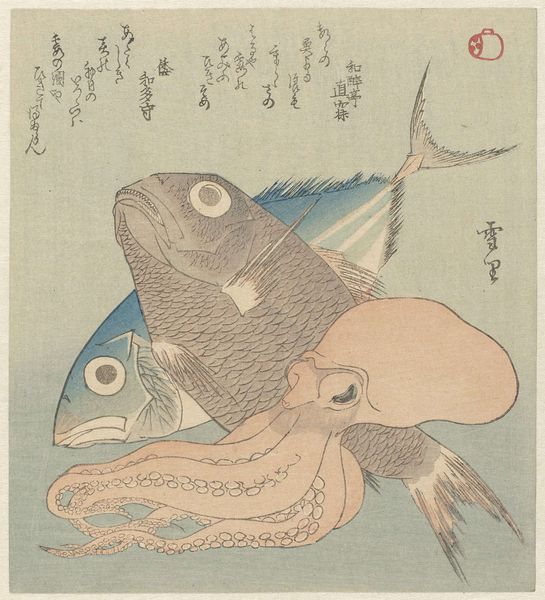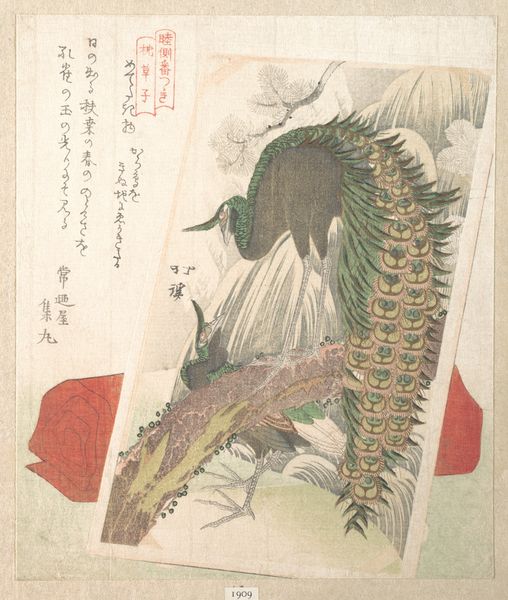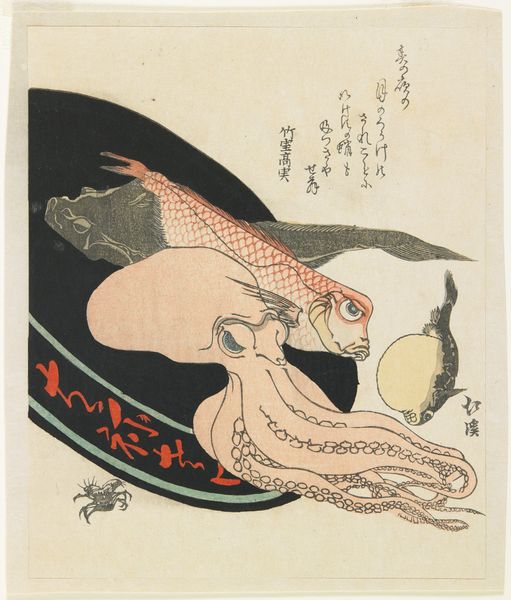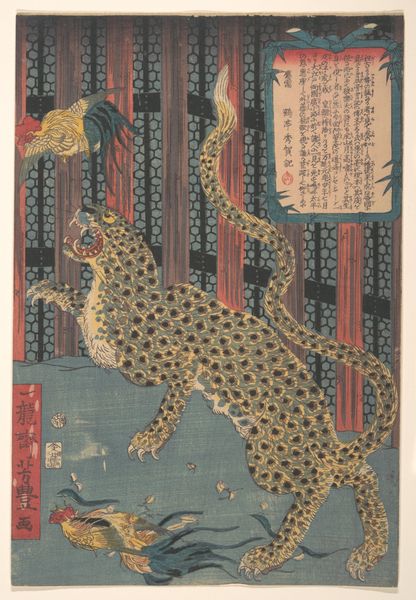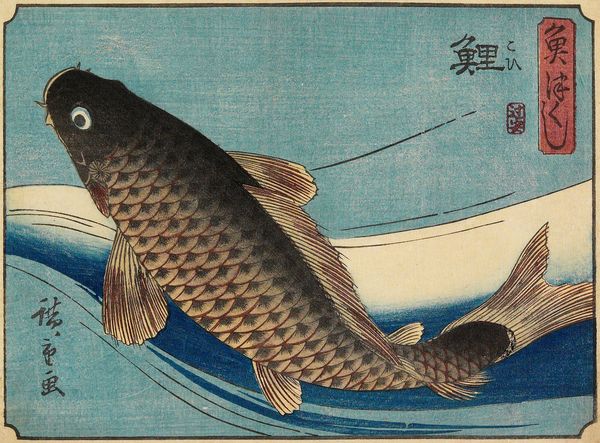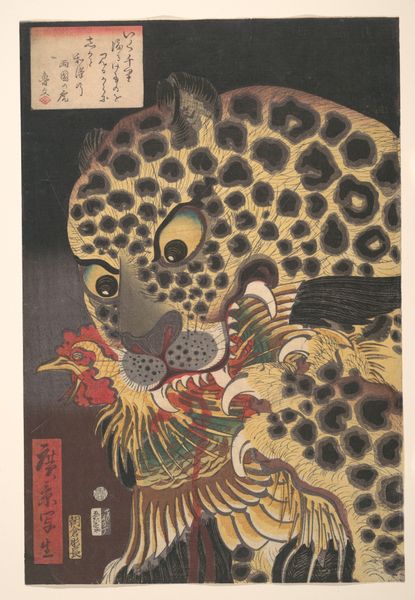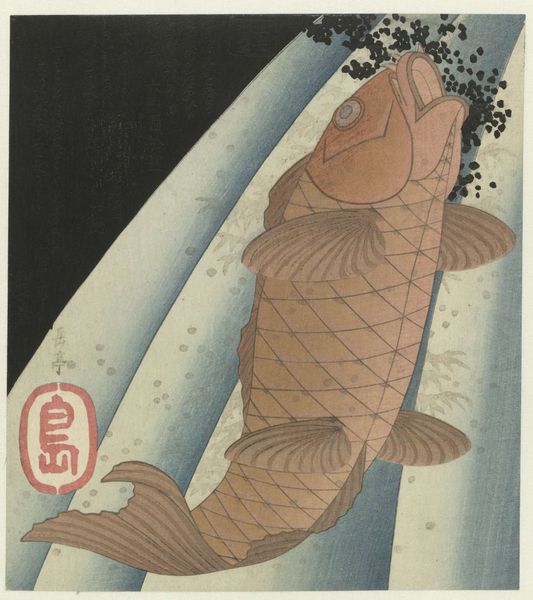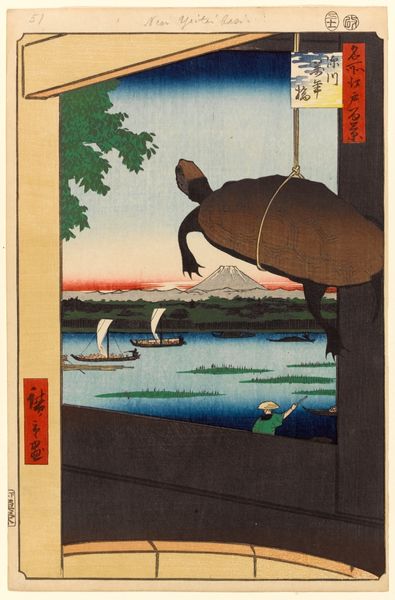
print, ink, woodblock-print
# print
#
asian-art
#
landscape
#
ukiyo-e
#
ink
#
woodblock-print
Dimensions: 13 1/4 × 8 11/16 in. (33.7 × 22.1 cm) (image)14 9/16 × 9 3/4 in. (37 × 24.8 cm) (sheet, vertical ōban)19 × 15 × 1 1/2 in. (48.26 × 38.1 × 3.81 cm) (outer frame)
Copyright: Public Domain
This is Utagawa Hiroshige's woodblock print "Suidō Bridge and Surugadai." Made in Japan, this print encapsulates the cultural vibrancy of the Edo period. The prominent carp streamers, or koinobori, immediately signal Children's Day, a celebration of youth and family. The choice of imagery speaks to a society deeply rooted in tradition, yet one that is beginning to negotiate its relationship to institutional structures. The koinobori themselves, symbols of strength and perseverance, rise above the cityscape, perhaps reflecting aspirations for the next generation, whilst also subtly commenting on social hierarchy. As you look closer you will see the iconic Mount Fuji in the background. To fully appreciate Hiroshige’s art, one might consult period almanacs, travel guides, and social commentaries to better understand the cultural codes embedded in his work. The meaning of art is always contingent on its social and institutional context.
Comments
minneapolisinstituteofart about 2 years ago
⋮
The carp-shaped streamers, white flags, and red wind cones shown here flying above gray roof tiles are decorations associated with celebrations on the fifth day of the fifth month. Originating in China, Tango festival was introduced to Japan in the eighth century as a day to wish for the good health over the coming summer months. Under Japan's first samurai regime in the fourteenth century, the festival was expanded to include wishes for the strength and good fortune of boys and young men-the future warriors of the country. Carp-shaped streamers, koi-nobori in Japanese, symbolize the great potential of male children because ancient Chinese believed that strong carp that swam upstream against the strong current turned into dragons. In this print, the square flags are emblazoned with images of Shøki, a Chinese scholar who vowed to rid the realm of evil. Thus, Shøki, became an emblem of male determination and courage.
Join the conversation
Join millions of artists and users on Artera today and experience the ultimate creative platform.
